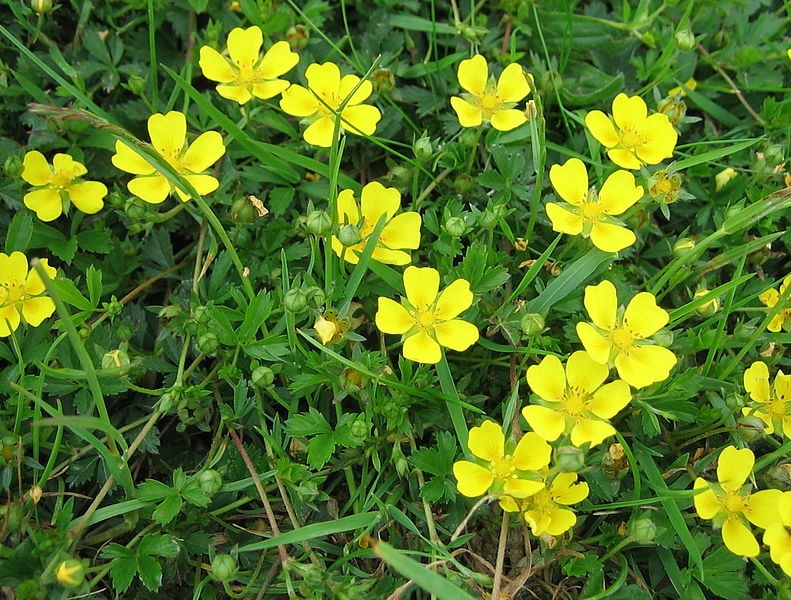Keeping your garden free of weeds can seem like a constant battle. We’ve made this guide to help you correctly identify some of the unwanted plants you might find in your garden. Once you know what weeds you’re fighting, you can use the right methods to get rid of them.

Creeping Cinquefoil (Potentilla reptans) by Phil Sellens is licensed under CC BY 2.0
What Are Creeping Lawn Weeds?
A weed is simply a plant that’s growing where it isn’t wanted. Plants that would be considered desirable in other contexts are often called weeds when they pop up on people’s lawns. Some weeds (like dandelions) can be beneficial to local insect life, but others (like Japanese knotweed) will simply outcompete any other plants in the vicinity.
Some weeds have to ‘creep’ along the ground to continually get access to sunshine, air and water. These plants grow close to the soil, spreading horizontally rather than vertically. They tend to have thin, weak stems that can become very long.
Types of Creeping Lawn Weed
There are so many different creeping lawn weeds that we couldn’t hope to cover them all here. Instead, we’ve listed the ones you are most likely to encounter in a UK garden.
Couch grass
This weed has nothing to do with sofas. Couch grass looks like a normal tuft of grass, and it’s a perennial, meaning it lives for more than two years. Because of this, and for how dense its roots networks can be, you may be advised to simply dig up your whole lawn and re-seed it.
White clover
White clover isn’t a harmful or invasive plant. In fact, it is very useful for converting nitrogen into a form that other plants can utilise. Its flowers are a great source of pollen for bees, and can be food for insects, so they’re great at luring slugs and snails away from your cabbages. White clover is also edible by humans – though you should probably boil the leaves first.
Despite its usefulness, white clover may still be considered a weed if it shows up on your lawn. If you want to get rid of it, use weed killer once the flowers are mown off.
Crabgrass
Crabgrass (also known as ‘finger grass’) looks like any other kind of grass, but when it dies off in winter it leaves big, unsightly voids in the lawn. For this reason alone, it’s best to get rid of it before it takes root. Mercifully, this isn’t too difficult a task. Crabgrass is not a competitive plant, so it can be crowded out as a seedling if you use vigorously-growing turf. If it does start to take root, you can control it easily enough by hoeing, mulching, and hand-pulling the young plants. Aerating the lawn will also help because crabgrass thrives in compacted lawns.
Creeping buttercup
Another iconic weed, creeping buttercup will very aggressively compete with grass and other weeds, and can often be the only weed in a neglected area of lawn. However, it is poisonous to eat, and exudes a sap that can cause skin blistering.
Because it creeps, it is very difficult to control. Regular courses of weed treatment can take care of even the most severe infestation.
Creeping cinquefoil
The flowers of creeping cinquefoil look very similar to buttercups, and can be very invasive if left unchecked. Control can therefore be difficult, and it is better to prevent this plant from growing in the first place.
Keeping your soil moist and well-cultivated will keep creeping cinquefoil at bay, but if it does gain a foothold, regular lawn treatment will help get rid of it.
If you are concerned about the presence of creeping lawn weeds in your garden, don’t hesitate to get in touch. Our lawn weed control plans are a surefire way of keeping your lawn green and healthy.
Get In Touch